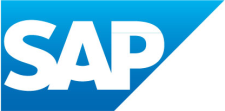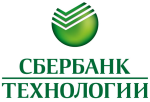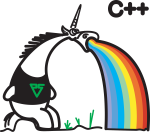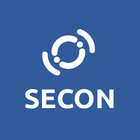Accepted proposals
Aleksandr Serbul, 188 Cloud service of personalized recommendations for 20,000 online stores: secrets, algorithms, technology
Aleksey Alekseev, 259 On development of application for Intel RealSense to animate avatar based 3D models using user’s mimicry
Alex Galkin, 197 Trader desktop – OS on top of OS.
Alex Pankov, 279 Usability testing in professional closed system. A process, complexity and result
Alexander Fedotov, 181 Risk managment or when the product should be released
Alexander Kataev, 250 Computer vision and augmented reality application development – now it is easy
Alexander Khrushchev, 231 Harness the rhino. Java Scripting API
Alexander Kolesnikov, 306 About experience of working with metrics for software quality assurance
Alexander Korshak, 202 Smart TV Platforms through the eyes of mobile application developers
Alexander Shalimov, 268 SDN programming challenges and approaches to handle them in the Runos OpenFlow controller
Alexandr Suhinin, 283 Discovering clones in software: from complex algorithms to everyday desktop tool
Alexey Arseniev, 162 Application integration experience in SAP. Rich vs thin clients, native vs Web based
Alexey Florinsky, 220 Organization of the analytics department
Alexey Fyodorov, 217 Unsafe in Java 9: to be or to be removed?
Alexey Mitsyuk, 264 Software Engineering Tools in Education
Alexey Moskvin, 156 Automated deployment of database changes using Liquibase
Alexey Petrov, 293 Systems Engineering for Software Engineers in Top-Ranking Technical Universities in Russia
Alexey Pryadko, 103 Experience of internet shop setup for large and well known retailer on eCommerce platform IBM Websphere Commerce
Anastasiia Fedostceva, 129 Metrics in software development and testing process, or tyranny of averages
Andrasz Husty, 312 Mobile imprinting in practice – forming new dependencies in user
Andrey Gordienkov, 137 Transitive Dependencies: Not the ones they pretend to be
Andrey Konovalov, 128 Experience of developing Cloud service for Video Surveillance
Andrey Sabynin, 107 How to manage priorities of tasks assigned to IT in retail bank
Anna Abramova, 157 Requirements management is not only about requirements
Anton Naumovich, 239 clang as a parsing and code generation tool for C++
Anton Nesterov, 275 Productisation: moving from outsourcing to product development
Anton Ovchinnikov, 144 Hadoop has changed. Will become Data Scientists happier?
Anton Semenchenko, 294 Triangle “Open kimono principle + Delegation + Self-Communication Management” as a motivation tool
Anton Semenchenko, 295 Unorthodox universal motivation model built in accordance with mathematic ‘happiness’ concept
Artem Kolomeec, 310 5 Ways to Kill team via Code Review
Boris Volfson, 277 Why Doesn’t Technical Specification help your project and what should you do?
Denis Doronin, 131 Creating Video Assistant for Retails. Gained experience.
Denis Silakov, 149 Testing of software based on third-party components by the Linux distribution example
Dmitri Kiryanov, 255 DIY: seven-league boots and magic tablecloth
Dmitriy Dzyuba, 108 Feature must be Green
Dmitriy Kalaev, 205 Out of Your Comfort Zone: How to Discover Growth Potential in Your Business?
Dmitry Bezuglyy, 299 Drivers & patterns of organization of effective software development
Dmitry Bugaychenko, 127 Smart data processing at OK.ru
Dmitry Cheremushkin, 307 Automated tests in the pocket
Dmitry Peterson, 167 How we introduced the quality service
Elena Belyaeva, 271 How can the delivery control themselves effectively?
Elena Belyaeva, 276 Gamification in Quality Management System for better engagement
Eugene Shevkoplyas, 142 Performance testing: standard mistakes
Eugene Zouev, 252 Some aspects of a modern common-purpose programming language design
Eugeny Govako, 151 Automated UI testing in isolation: evolution of Simulator approach
Evgeny Kolesnikov, 180 Aspects of Antifragile Software Development for Service Company.
Evgeny Vinogradov, 263 From history to vectors: data warehouse for scoring system
Igor Bespalchuk, 176 Architecture: natural and artificial
Igor Gustomyasov, 300 Secure Gateways in Banking: Real-Life Scenarios
Igor Markov, 304 Real-Time Image Comparison Using The Cloud Computing
Igor Odintsov, 233 IT-education: how to teach what not exists?
Igor Suhorukov, 118 AspectJ Scripting
Ilya Kashtankin, 251 management of project stakeholders – expertise SimbirSoft
Ilya Niklyaev, 273 Development of UAV navigation algorithm with use of ROS
Inga Egorova, 309 Usage of design patterns as a kind of components of software architecture
Kirill Danilov, 254 Cross-platform desktop app development with nw.js
Kirill Krinkin, 270 Block Level Data Compression in Linux. Pro et contra
Kirill Shatilov, 114 An Architecture for Secure Web Resource with Outsourced Database
Konstantin Bychenkov, 147 Big data in medical image processing
Konstantin Savenkov, 133 Measuring the agile process improvement
Ksenia Sternina, 125 How research helps to develop and verify interfaces (the experience of Mail.ru search engine on pictures)
Leonid Migunov, 73 Test House – organization of testing for projects (geographically distributed teams) in one software enterprise solution.
Maksim Gaponov, 249 Collaborative product discovery
Marat Khabibullin, 248 On Development of Static Analysis Tools for String-Embedded Languages
Marina Kudinova, 282 CPU utilization prediction methods overview
Marko Kazhich, 224 Scalable workflows for front end development
Michael Malyshev, 141 Specific of portable Android devices development
Michael Rootman, 152 PleskFS – hybrid file system for cloud web hosting. Implementation and features of use.
Mikhail Malevannyy, 226 Aspect Markup of a source code for quick navigating a project
Mikhail Matrosov, 123 Daily C++
Mikhail Salamatov, 67 From a freshman to an engineer. 4 university relations programs of EMC Russia Center of Excellence.
Nadezhda Mincheva, 208 Painless Integration
Nikolay Yasinskiy, 166 How to create a development team of students with minimal cost and risk
Oksana Nekrasova, 163 Agile adoption in the corporation: three waves of transformation
Olesya Voronovich, 195 Secrets of Agile-teams motivation. Are your team happy?
Olga Pavlova, 272 Embedding Continuous UX into production cycle of IT-company
Pavel Egorov, 122 Why you should organize your IT-conference and how to do it
Pavel Kiselyov, 164 UX Kit – taming UX of a complex financial software
Pavel Muzyka, 160 Code generation in .NET: theory, practice and T4 templates
Pavel Novikov, 287 Justification of the Choice Learning Algorithms of Neural Networks for Indoor Mobile Positioning
Peter Kalambet, 225 Zero-knowledge proof based authentication service in the cloud
Rina Uzhevko, 106 Manageability and Testing : experience using
Roman Belkov, 241 Kotlin for robotics: it is functional
Roman Kvartalnov, 155 Design for development
Ruslan Savvotin, 209 How to launch projects quickly while keeping the User Experience in mind
Sergei Karbovskii, 262 To Fear or Not to Fear: A Daunting Interface Paradigm
Sergey Avdoshin, 301 Ecosystem of the SWEBOK Guide V3.0
Sergey Gridnev, 308 Development vs Testing – who is on the cricial path
Sergey Kochetov, 223 Particular features of the development of mobile applications for video conferencing
Sergey Sobolev, 130 Theory of Constraints (TOC) application experience in R&D projects
Sergey Sukhanov, 184 Meteor on hands of developers
Semen Petkov, 230 Improving collaboration with business. How to help the team to focus on the really important things?
Slavy Slavov, 204 Why security testing is more important than ever
Svetlana Bolsunovskaya, 191 5 “enemies” of teamwork in the SAFe and how to fight them
Svetlana Lazareva, 199 Automatic Request Analyzer for QoS Enabled Storage System
Svetlana Mukhina, 274 Coaching Tools on Practice
Svetlana Mukhina, 278 Project Meeting Facilitation
Svetlana Mukhina, 281 Metrics that Bring Value
Timofey Turenko, 221 Automatic tool for multi-configuration environment creation for database server and database proxy application testing
Vadim Mustyatsa, 298 Demonstration of the conversational possibilities and the benefits of the Gherkin language in Agile Software Development projects
Vadim Zubovich, 261 Desktop automation testing tools. Comparison.
Vasiliy Mikhailov, 72 How do we measure development productivity and software quality in National Settlement Depository
Vasiliy Tolstoy, 266 Cooperative network virtualization in the industrial server applications on Linux
Vasily Litvinov, 234 Python Code Performance: Tools for Tuning
Victor Sychev, 237 Talents management in the IT company’s reality or how to manage talents and not to damage the company
Vladimir Kishik, 216 OpenOnload: raising performance of distributed systems
Vladimir Kupratsevich, 178 Localization in a cloud platform. Instructions for software developers
Vyacheslav Moskalenko, 297 Quickly and effectively. How to estimate large projects?
Yuri Vedenin, 384 How to dive into the new business domain efficiently and productively
Yury Kupriyanov, 269 National Open Education Platform: Architecture and Ecosystem
The submissions are now closed.
CEE-SECR 2015 is the premier software engineering conference in Russia. The conference will take place on October 22-24 at the Digital October Center, Moscow. Nearly 1000 participants are expected to attend the event, representing IT industry specialists from all areas: researchers and students from computer science, IT and software engineering academia, and practitioners from industry and government.
In its past 11 years the conference was supported by Russian Venture Company, Intel, Deutsche Bank, JetBrains, SAP, SberTech, First Line Software, Oracle, EMC, Google, IBM, Microsoft, EPAM, Luxoft, IEEE, ACM, APKIT, RUSSOFT Associations, and other organizations.
In the past years, keynote lectures were delivered by Dino Esposito, Ivar Jacobson, Jeff Sutherland, Bjarne Stroustrup, and other distinguished experts.
The conference program will be composed of research presentations, experience reports, panel discussions, workshops, and express-presentations with discussions.
CEE-SECR is a multi-disciplinary conference that allows the participants to overview a wide range of software industry topics and trends, and deepen their understanding of the areas of interest, which may be adjacent to their core specialization.
Proposal submission is over
Scope
This year we specifically welcome the high quality submissions on the trending topics.
Trending topics
- Software-Defined Architecture
- Web-Scale IT
- Big data, Smart data
- Mobile and cross platform application development
- Microcontrollers with wifi
- Internet of Things
- Computing Everywhere
- Security by Design
- Risk-Based Security and Self-Protection
- Security of Mobile Application
- Internet of Threats
- Cloud Security
- Context-Rich Systems
- Effective managed communication
- Social computing
Traditional topics
- Software architecture
- Cloud Computing
- Programming technologies and tools
- Programming for Robots
- Embedded systems
- Software testing, verification, and analysis
- Software security and reliability
- Usability and UX
- Engineering of requirements and applied system analysis in IT projects
- Project and product management
- Agile methodologies, Essence/SEMAT
- Software quality assurance
- Human capital and education
- Business and Entrepreneurship in the computer software industry (startups, patenting, etc.)
Domain-specific software engineering
- Banking and finance industry
- Healthcare
- Transportation
- Government sector
- Gaming industry
Other topics
The Program committee will also review proposals on any other software engineering related topic.
Submission
Please upload the following information via the submission system:
- Topic and short description in English (and in Russian, if possible). During the review process the topic and short description will be published on the Proposals section of the conference website.The description must include 1-3 sentences covering the main point of the talk.
Examples
Example 1: “If participants have problems with designing interfaces, in my report they will be able to learn about some ways of using DSL for the modification of automatically generated forms. This approach is not covered in the current literature, but our successful implementation shows that it works.”
Example 2: “I will share my experience in communication with difficult customers based on seven years of work and over 20 successful projects, which will be presented in the form of case studies with analysis/conclusion. I think that participants will be able to apply this knowledge in their daily work, since some of these situations have occurred more than once with different clients.”
- Extended annotation (1800 characters or more) in English or Russian. During the review process the publication of an abstract on the conference website is optional (at the author’s discretion).The content of the extended annotation should fully reflect the essence of the final report. It should clearly state not only the subject area of the report, but also the specific issues which will be covered, as well as the scientific, technological or innovative solutions offered by authors.
Please do not send lists of slides, promotional materials, links to forums, or previously-published reports or articles in place of the extended annotation.
Many authors describe a problem and its importance and promise to reveal the solution in their report. This is not enough: the solution itself should be stated and justified, whether it is an original idea, a new combination of ideas, or a successful practice. The relevance of the problem should be shown, with references to literature or other open sources (especially for articles).
If the author positions the report as a scientific work, he/she should replace the extended annotation with a full article (up to 10 pages) formatted in accordance with the standard ACM requirements for scientific papers. View templates.
During the review process the article will not be published on the conference website.
For workshop proposals please also state the following: the workshop duration, target audience, program. During the review process this information will not be published on the conference website.
- Author(s) photo and a short bio of 3-5 sentences. Authors are encouraged to share links to their published works, public presentations, and social-networking profiles. During the review process the publication of the bio and photo on the conference website is optional (at the author’s discretion).
In addition, please specify the following:
- The type of your talk: a presentation of scientific research results that can be used; a presentation of ideas for action by analogy; an informational overview; a technology presentation; new technology training; new tool training; a case study, including the experience of using technology.
- The subject of your talk: one or more areas from the conference Scope (above).
The following materials will not be accepted:
- Promotional presentations and articles (designed to promote a company, product or service)
- Presentations previously delivered at other conferences
- Papers previously published or accepted by another conference or journal.
Review procedure
After the proposal has been received, the Program committee representatives can ask questions or give recommendations to the author. If the proposal is compliant with the requirements, it is published in the Proposals section of the conference website. The author can correct the proposal via the system until July 27th.
After July 27th the final review is conducted by the Program committee. Extended annotations (for talks) or full articles (for all papers) are reviewed by at least three members of the Program committee, who can recommend the proposal for inclusion in the conference Program and give their recommendations to the authors. Some proposals can be accepted conditionally, with a request to the author to provide some additional information. Upon receiving this information, additional voting for these proposals shall be organized.
After the final decision has been made, a notification will be sent to the author, and the list of accepted talks / articles will be published at the conference web-site.
Timing and Equipment
- 30 minutes is allocated for each regular presentation, including time for discussion; 15 minutes for each express presentation; 2-8 hours for workshops.
- Each room will be equipped with a plasma screen and a PC.
- Presentation languages: Russian or English.
Author benefits
- One free conference pass per accepted paper will be given to the speaker making the presentation.
- The authors of the best research papers will receive the Bertrand Meyer Award (from 5 000 to 25 000 Rubles).
- The scientific articles (full papers) will be published in ACM Digital Library.
- Videos, slides, report annotations, and the bios of the authors are published on the conference website.
Important dates
- July 27, 2015 – Submission deadline
Authors are encouraged to submit proposals in advance in order to be able to improve their proposals on the basis of the program committee’s preliminary review. Proposals submitted after July 15th won’t receive preliminary review. - August 31, 2015 – Acceptance notification
- September 30, 2015 Camera-ready submission deadline
- October 22-23, 2015 – Main Conference days
- October 24, 2015 – Master-class and workshop day
Contacts
Nick Puntikov, Chair of CEE-SECR 2015
Julia Kryuchkova, Secretary of CEE-SECR 2015
Moscow: +7 499 703 16 55
Saint-Petersburg: +7 812 336 93 44
contact@secrus.org
 Русский
Русский 




























